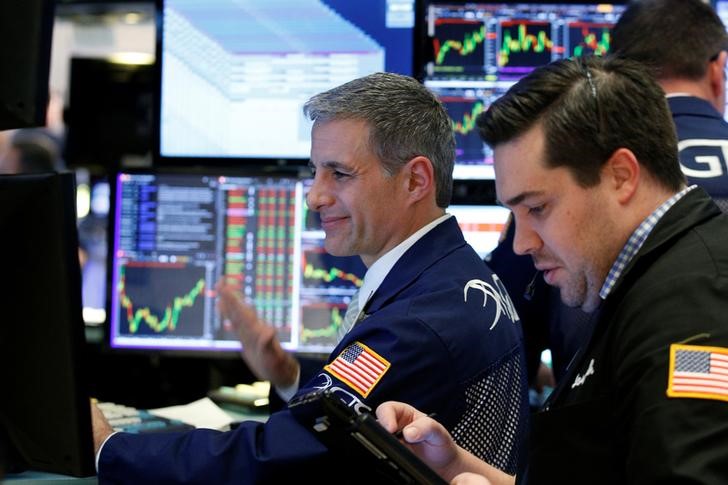By James Saft
(Reuters) - Investors betting that the high level of U.S. corporate profits will revert to the “old normal” may have a long and costly wait on their hands.
The rise and rise of corporate profits in recent years has defied economic theory which holds high profits should bring on investment and competition.
S&P 500 index profits on sales are pushing towards 9.0 percent, which would be 80 percent higher than the average before 1997 and about 30 percent higher than what we’ve usually seen since.
That’s helped to push cyclicly-adjusted price/earnings ratios to levels only seen twice before - in 1981 and 1929.
U.S. stock prices are high but those who’ve tried to stand against the tide are not doing so well.
The big questions are why profits are so high, and can it be sustained?
Jeremy Grantham, a value investor at GMO, thinks profits have been propped up by a combination of low interest rates, the increasing value of brands due to globalization, and increasing corporate power.
Corporations are benefiting from more political and monopoly power in a self-reinforcing cycle that allows them to extract more in profit from their customers.
Even if, or as, interest rates rise, this may not end soon.
“If you are expecting a quick or explosive market decline in the S&P 500 that will return us to pre-1997 ratios (perhaps because that is the kind of thing that happened in the past), then you should at least be prepared to be frustrated for some considerable further time: until you can feel the process of the real interest rate structure moving back up toward its old level,” Grantham wrote in a note to investors. ( https://www.gmo.com/ )
All of these factors may well have contributed to rising profit margins, but the role of interest rates is puzzling.
Low interest rates imply abundant and cheap financing, which in theory should make the job of competing with an incumbent easier.
And while low interest rates may make share buy-backs, as opposed to investment in new capacity, more attractive for large firms, this again does nothing to stop competitors from deciding to winnow away margins by expanding.
COMPETING THEORIES
James Bessen, of Boston University School of Law, argues in a paper published in 2016 that about half of the rise in profits and valuations since 1980 is traceable to political gamesmanship, involving influencing and arbitraging regulations to inhibit competition. (https://papers.ssrn.com/sol3/papers.cfm?abstract_id=2778641)
Bessen found that the more regulated an industry sector was, the more entrenched companies benefit via higher margins.
There is a "rent-seeking sector”, according to the study, which captures more than half of the benefit of obstructive regulation, especially in the pharmaceuticals/chemicals, petroleum refining, transportation equipment/defense, utilities, and communications sectors.
Even, or especially, in the era of Trump, it is unwise to expect Washington to roll back regulations in a way which really expose large companies to competitive forces.
In two papers last year, Thomas Philippon, Germán Gutiérrez and Callum Jones, all of New York University, looked at the puzzle of why investment is so low in the U.S., despite corporate securities trading for such high prices in comparison with the cost of replacing corporate production. Why not invest and make a handsome profit?
(https://www.brown.edu/academics/economics/sites/brown.edu.academics.economics/files/uploads/Thomas%20Phillipon_Paper.pdf and http://pages.stern.nyu.edu/~tphilipp/papers/QNIK.pdf)
They found that the investment gap is driven by firms in sectors with less competition which elect to prioritize financial engineering and share buybacks over investment.
Interestingly, these firms tend to be owned by institutional shareholders which shadow the equity indices, and who perhaps prefer short-term management, in line with their own career risk, over long-term investment.
As well, this dearth of investment itself is keeping interest rates low. Without this lack of competition the U.S. would have lifted policy interest rates above the zero lower bound in 2010 and rates today would be about 2.0 percent.
So it isn’t that interest rates have to rise so margins, and with them, equities, fall, but the reverse. Competition will need to go up for interest rates to rise.
As things stand, the forces which benefit from this - company management and benchmarked fund managers - are far more powerful than the rest of us who suffer.
Don’t expect things to change soon.

(At the time of publication James Saft did not own any direct investments in securities mentioned in this article. He may be an owner indirectly as an investor in a fund. You can email him at jamessaft@jamessaft.com and find more columns at http://blogs.reuters.com/james-saft)
(James Saft)